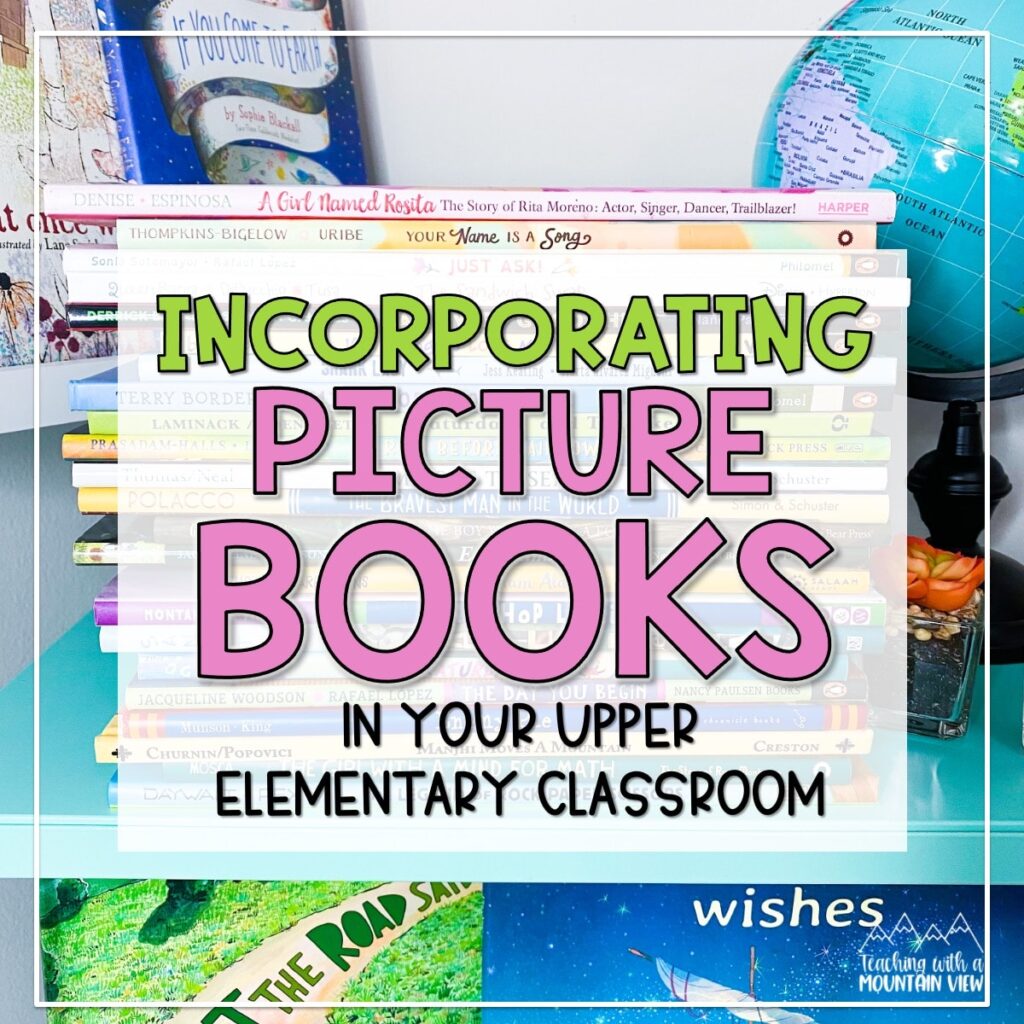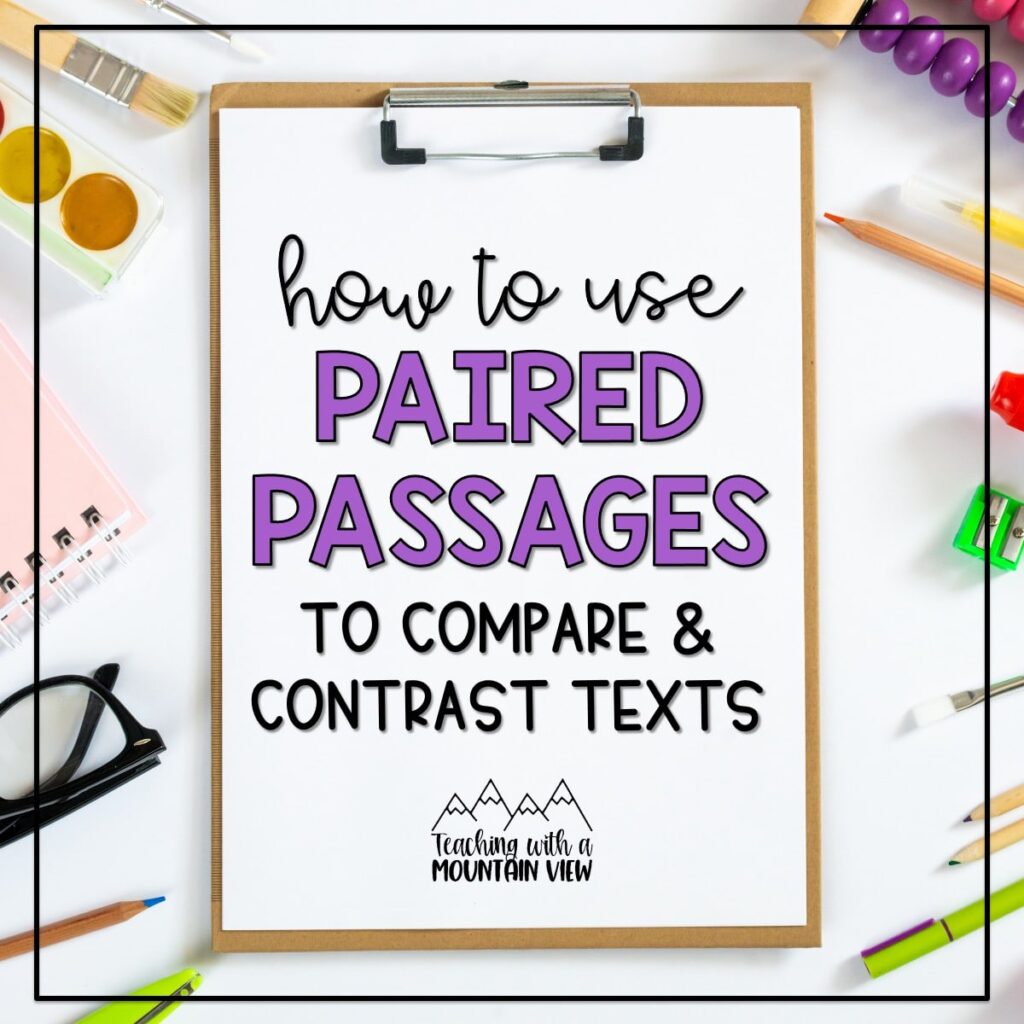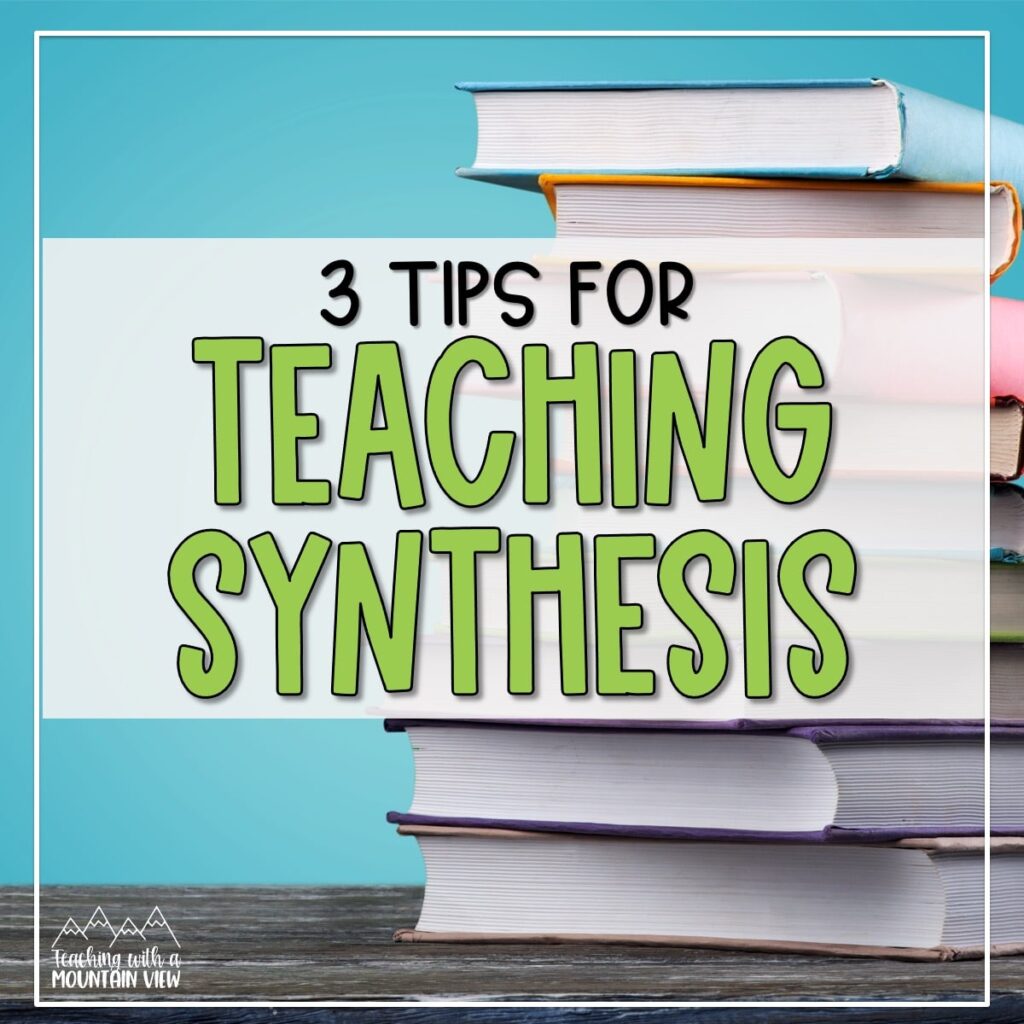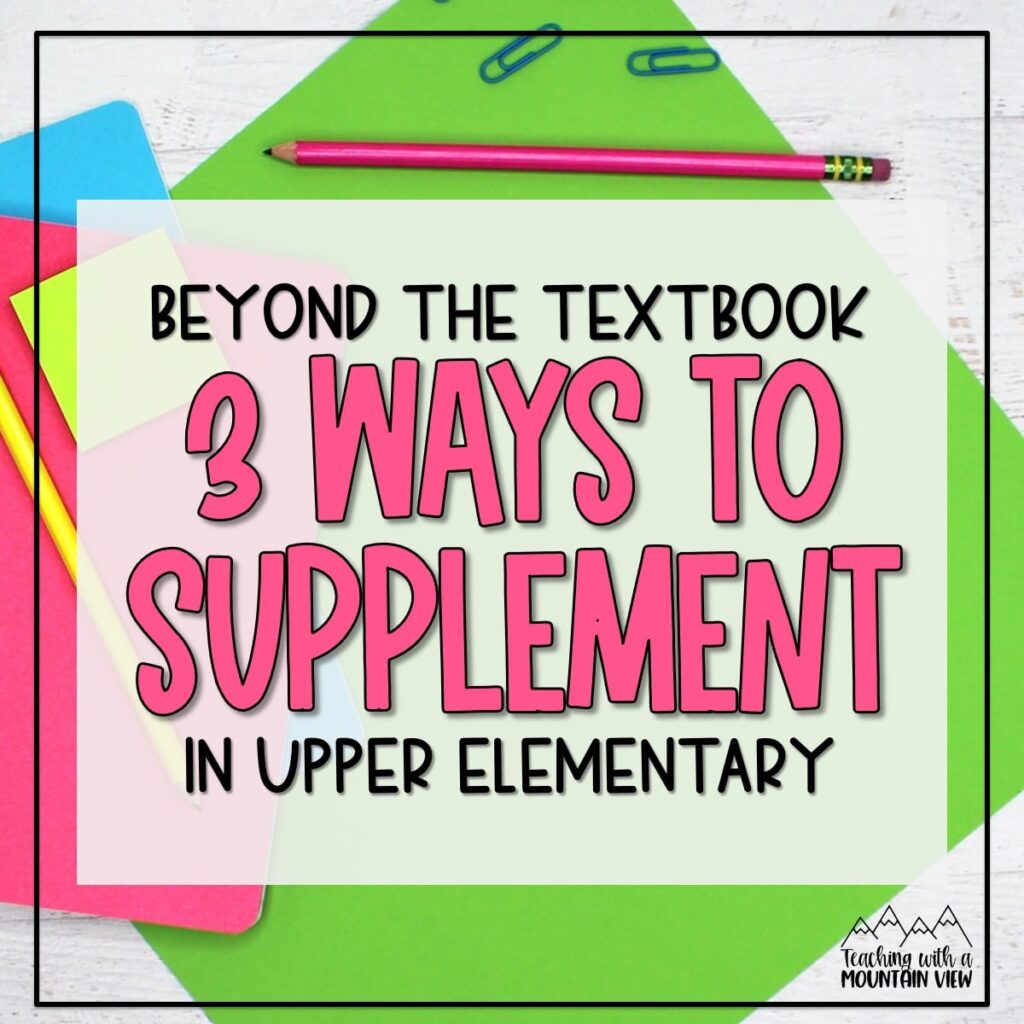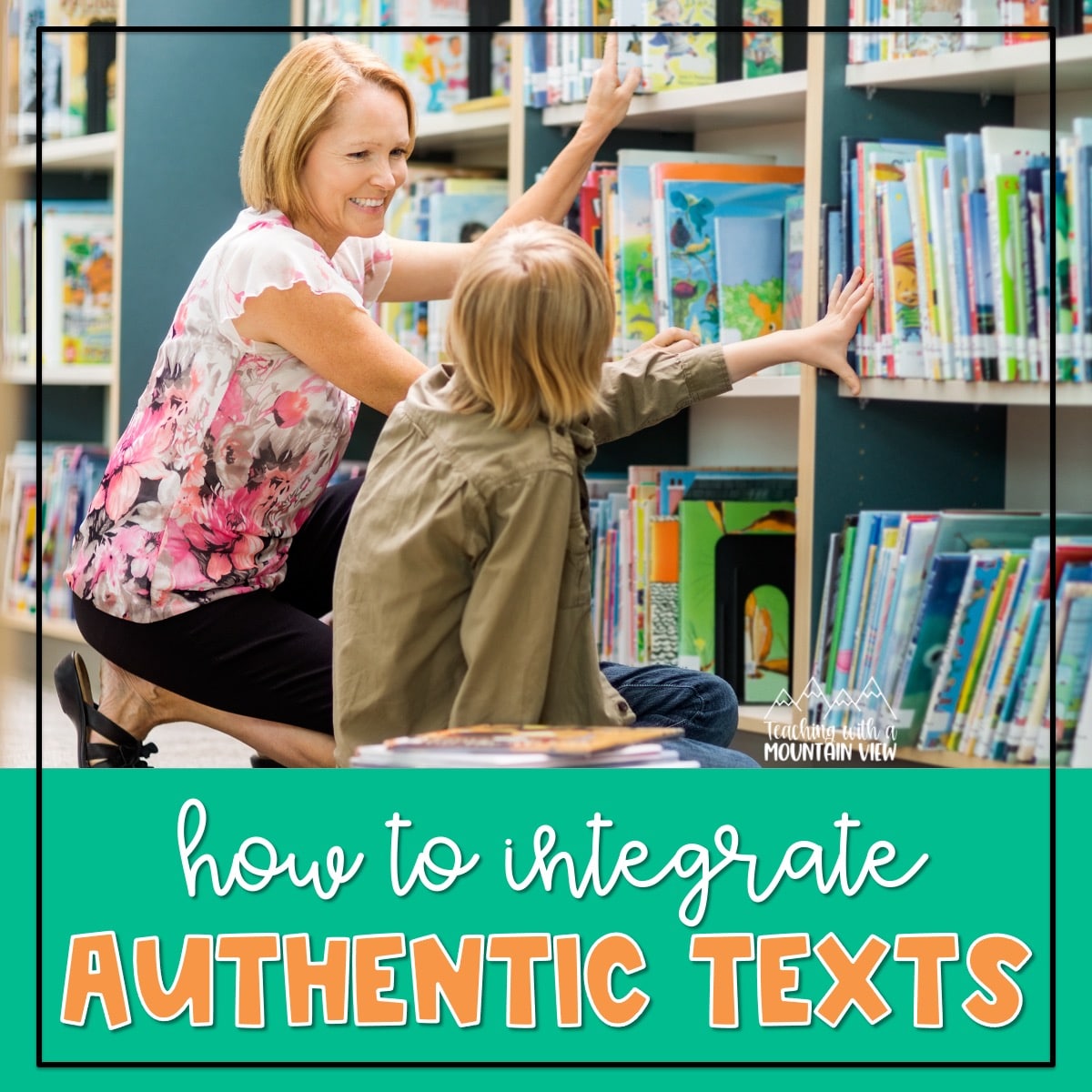
As the textbook and curriculum industry has grown, contrived texts have become more and more common in the classroom. While contrived texts have their purpose, experts say that authentic texts are essential to creating strong readers. In this post, I’ll share specifically about what authentic texts are, how they are beneficial, and how you can add them to your existing curriculum.
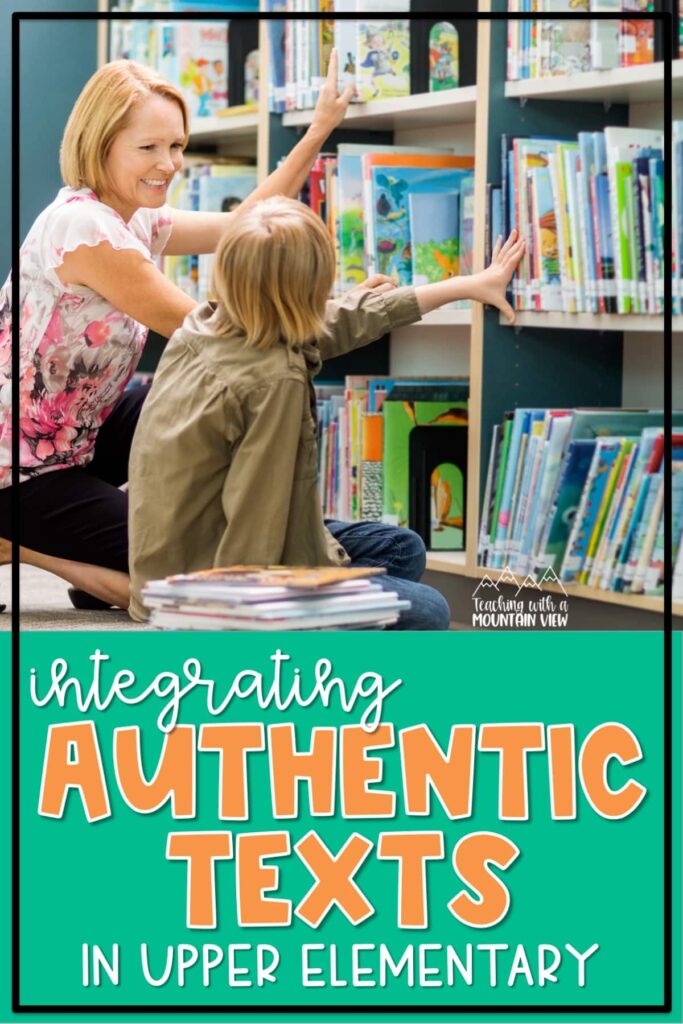
What are authentic texts?
When I first heard the term authentic texts, I was a little confused. What does that mean? Aren’t all texts authentic? An authentic text is a “real world” passage or story written purely to inform, entertain, persuade, etc. A contrived text (textbook, leveled reader etc) was written for the purpose of teaching students how to read or helping students master reading skills.
While you can use authentic and contrived texts to teach literacy skills, they are often written in a different style. The language in an authentic text likely sounds more natural and gives deeper language with more meaning. It is relatable and relevant.
Think of all of the different “texts” you see in your everyday life… menus at a restaurant, envelopes and letters in the mail, newspapers at the doctor’s office, signs at the grocery store and YES, even social media posts! Those are all authentic texts!
What are the benefits to authentic texts?
When we start to think outside of our classroom walls, there is a whole world for us to explore. As educators, it is our responsibility to facilitate real-world experiences for our students to help them process and make sense of the world. How can we do that? By integrating complex authentic texts. Oftentimes, when students are only exposed to textbooks and curriculum texts, there is a gap from the classroom to the application of what they learn in the real world. By incorporating relevant, authentic texts, we as educators can help close that gap.
Authentic texts also expose students to a variety of sentence patterns, language devices, sayings, and more. Students who are exposed to a wider variety of sentence structure and vocabulary are able to write better, struggle less with grammar, and have stronger comprehension.
While not all contrived texts are basic or boring, they don’t tend to have the deeper language and meaning that an authentic text does. Therefore they don’t tend to have the same level of engagement of an authentic text.
Where can I find authentic texts?
The great news is that authentic texts are everywhere! Children’s books, both fiction and nonfiction, are great to use as model and mentor texts in the classroom. In fact, I have several posts with read aloud book ideas. Here are two favorites:
You can also find authentic texts through various websites and the library. Building a classroom library or taking library trips with your students is an easy way to get students reading authentic texts. Websites like NewsELA and CommonLit have fiction and nonfiction options.
What about reading levels?
When you move outside of the traditional classroom texts books, you will have to do a little bit more research to ensure that your text is developmentally appropriate for your students. In a Science of Reading based classroom, it’s unlikely that you’ll need to level books once students have moved past decodables. However, one critical part of utilizing authentic texts in your classroom is to model many different texts and conduct think-alouds. Many students will need the guidance and scaffolding of a think-aloud in order to understand how to analyze and comprehend these more complex texts.
If you’re still concerned about text levels, one way you can ensure you are using a developmentally appropriate text is by taking advantage of a text analyzer such as the Lexile Text Analyzer. This allows you to take a few sentences of the text you want to use and run it through an analyzer that will tell you information about your text. You may find that authentic texts may be “above” your student’s grade level. That is perfectly okay! Again, you are going to need to model these complex texts for students and make sure they have the decoding and reading skills necessary to tackle them, no matter the level.
Pro Tip: If selecting a text that is more complex, try to find or use a shorter piece of the text and include a graphic to help them better understand the material.
You can also use websites like Lexile.com. If you put in the grade level you are looking for, it will recommend novels and stories that work well for your students. You can choose different settings, like easy or just right, so you know how comfortable your students will feel with comprehending the text.
At the end of the day, don’t be afraid to challenge students and let them read what they want without stressing about levels.
Using Authentic Texts with Your Current Curriculum
Adding authentic texts to your current curriculum doesn’t have to be challenging. Here are some ideas for incorporating authentic texts into your current curriculum:
Paired Passages
One simple way is through paired passages. If your curriculum expects you to read a contrived text about volcanoes, pair it with a nonfiction book or passage about volcanoes. Students can still complete the same activity that is within your curriculum, or they can work on comparing / contrasting and synthesizing. This paired passage post and this synthesizing post have more great tips for how to do this.
Thematic Units
A lot of curriculums and textbooks are organized by a theme, such as courage or natural disasters. The curriculum or book might recommend seven passages, and you can add in another to provide an authentic text. If you have the flexibility, you can even replace some of the provided texts. This way you are still reading within the parameters of your curriculum, but adding a little something extra!
Novel Study
Novel studies are a fantastic way to add in authentic texts. Here are more posts about how I organize my novel studies. Essentially in novel studies, students are reading an authentic text together with a group, and applying the skills from the curriculum. As an example, if students just learned about summarization using a contrived text, they would then apply it to their novel study. This works really well with scaffolding and allows students to get through a whole novel rather than just a passage.
More Resources
A lot of teachers feel stuck and confined by their curriculum, so I hope this post helped you find some ways to include new and exciting authentic texts. If you want more ideas for jazzing up your current curriculum, here’s another post detailing three ways you can supplement your textbook.
How do you incorporate authentic texts in your classroom? Come share your ideas with us in our FREE Inspired in Upper Elementary Facebook group.
Mary Montero
I’m so glad you are here. I’m a current gifted and talented teacher in a small town in Colorado, and I’ve been in education since 2009. My passion (other than my family and cookies) is for making teachers’ lives easier and classrooms more engaging.







